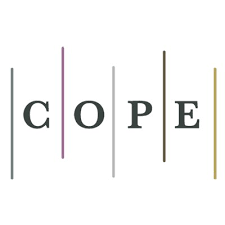Forecasting Startup Return using Artificial Intelligence Methods and Econometric Models and Portfolio Optimization Using VaR and C-VaR
DOI:
https://doi.org/10.59615/ijie.2.1.78DOR:
https://dorl.net/dor/20.1001.1.27831906.2022.2.1.8.7Keywords:
Artificial Neural Network (ANN), Genetic Algorithm (GA), Econometric Models, Startup valuation, Value at Risk and Conditional Value at Risk (VaR & C-VaR)Abstract
In this paper, we have tried to study the main role of startups in economy, their characteristics, main goals and etc. The main goal of article is prediction of startup's return using artificial intelligence methods such as genetic algorithm (GA) and artificial neural network (ANN). Some global indices such as S&P500, DJAI, and economic indicators such as 10 years Treasury yield, Wilshire 5000 Total Market Full Cap Index along with some other special indicators in startups like team, idea, timing and etc. are used as input variables. GA is used as feature selection and finding the most important variables. ANN is used as an optimization model and prediction of startup's returns. We used econometric models such as regression analysis. We have estimated Value at risk (VaR) and Conditional Value at risk (C-VAR) for considered portfolios including three startups (public company) such as Dropbox, Inc. (DBX), Scout24 SE (G24.DE) and TIE.AS and optimal portfolio formation. The results show that AI based methods are more powerful in prediction of startup's return. On the other hand, VaR and C-VaR models are very beneficial approach in minimizing risk and maximizing return.
Downloads
References
• Agatonovic-Kustrin, S., & Beresford, R. (2000). Basic concepts of artificial neural network (ANN) modeling and its application in pharmaceutical research. Journal of pharmaceutical and biomedical analysis, 22(5), 717-727.
• Akkaya, M. (2020). Startup valuation: Theories, models, and future. In Valuation Challenges and Solutions in Contemporary Businesses (pp. 137-156). IGI Global.
• Baltagi, B. H. (2011). What Is Econometrics? In Econometrics (pp. 3-12). Springer, Berlin, Heidelberg.
• Bjørnskov, C., & Foss, N. J. (2016). Institutions, entrepreneurship, and economic growth: what do we know and what do we still need to know? Academy of Management Perspectives, 30(3), 292-315.
• Boudieb, D., Mohammedi, K., Bouziane, A., & Smaili, Y. (2011). OPTIMIZATION TECHNIQUES BY DARWIN'S THEORY OF EVOLUTION. International Journal of Arts & Sciences, 4(19), 131.
• Chatterjee, S., & Hadi, A. S. (2013). Regression analysis by example. John Wiley & Sons.
• DeJong, K. Analysis of the Behavior of a Class of Genetic Adaptive. Ph.D. Thesis, University of Michigan, Ann Arbor, MI, USA, 1975.
• de Oliveira, F. B., & Zotes, L. P. (2018). Valuation methodologies for business startups: a bibliographical study and survey. Brazilian Journal of Operations & Production Management, 15(1), 96-111.
• Dhochak, M., & Doliya, P. (2020). Valuation of a startup: Moving towards strategic approaches. Journal of Multi‐Criteria Decision Analysis, 27(1-2), 39-49.
• Edison, H. (2020). Lean Internal Startups: Challenges and Lessons Learned. In Fundamentals of Software Startups (pp. 251-268). Springer, Cham.
• Hidayat, S. E., Bamahriz, O., Hidayati, N., Sari, C. A., & Dewandaru, G. (2021). Value drivers of startup valuation from venture capital equity-based investing: A global analysis with a focus on technological factors. Borsa Istanbul Review.
• Hsu, D. K., Haynie, J. M., Simmons, S. A., & McKelvie, A. (2014). What matters, matters differently: a conjoint analysis of the decision policies of angel and venture capital investors. Venture Capital, 16(1), 1-25.
• Hyrkäs, A. (2016). Startup complexity: tracing the conceptual shift behind disruptive entrepreneurship. Publications of the Faculty of Social Sciences.
• Jedlickova, M., & Kutnar, P. (2017, October). Construction of a fuzzy model for the success prediction of hi-tech companies with a short history. In International Conference at Brno University of Technology, Faculty of Business and Management.
• Laitinen, E. K. (2019). Discounted Cash Flow (DCF) as a measure of startup financial success.
Published
How to Cite
Issue
Section
License
Copyright (c) 2022 Milad Shahvaroughi Farahani, Amirhossein Esfahani

This work is licensed under a Creative Commons Attribution 4.0 International License.










